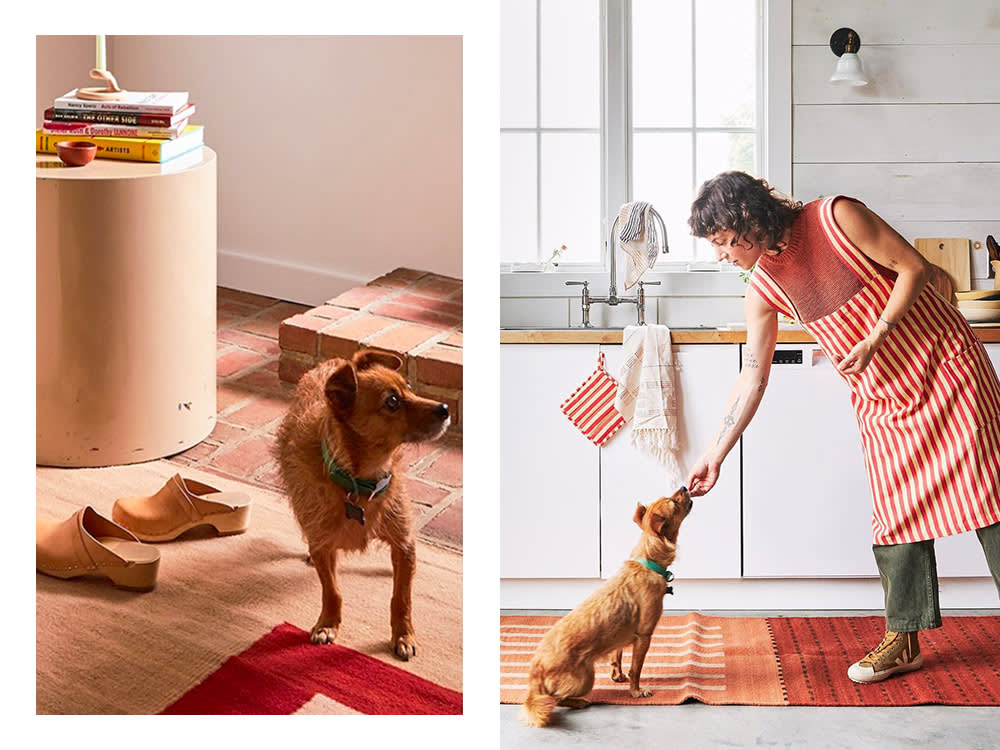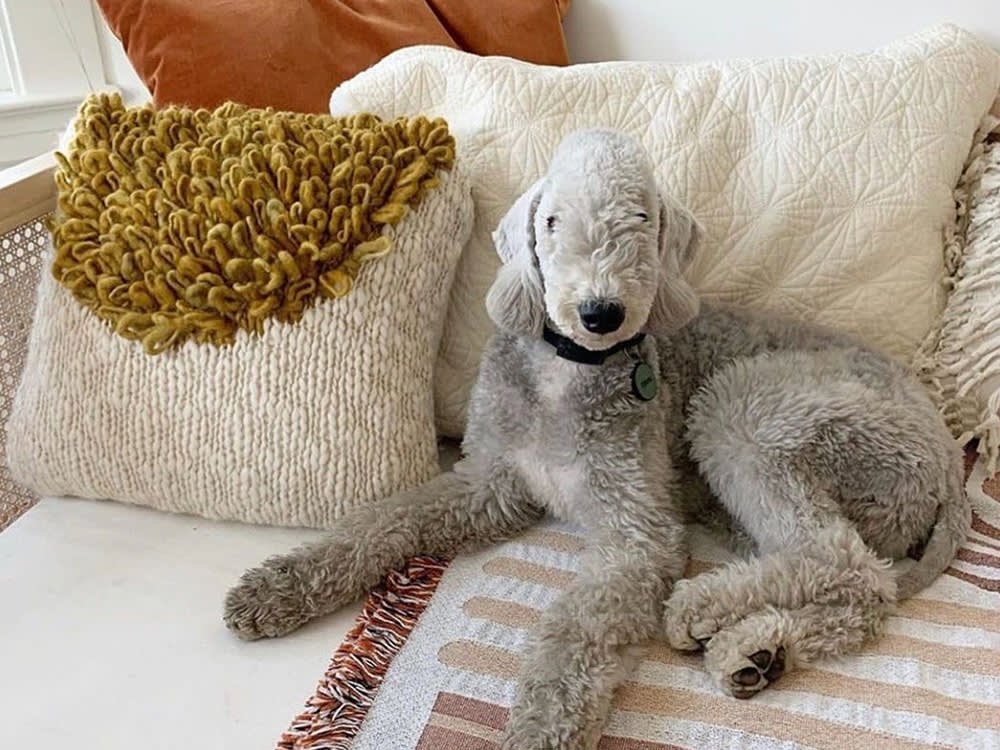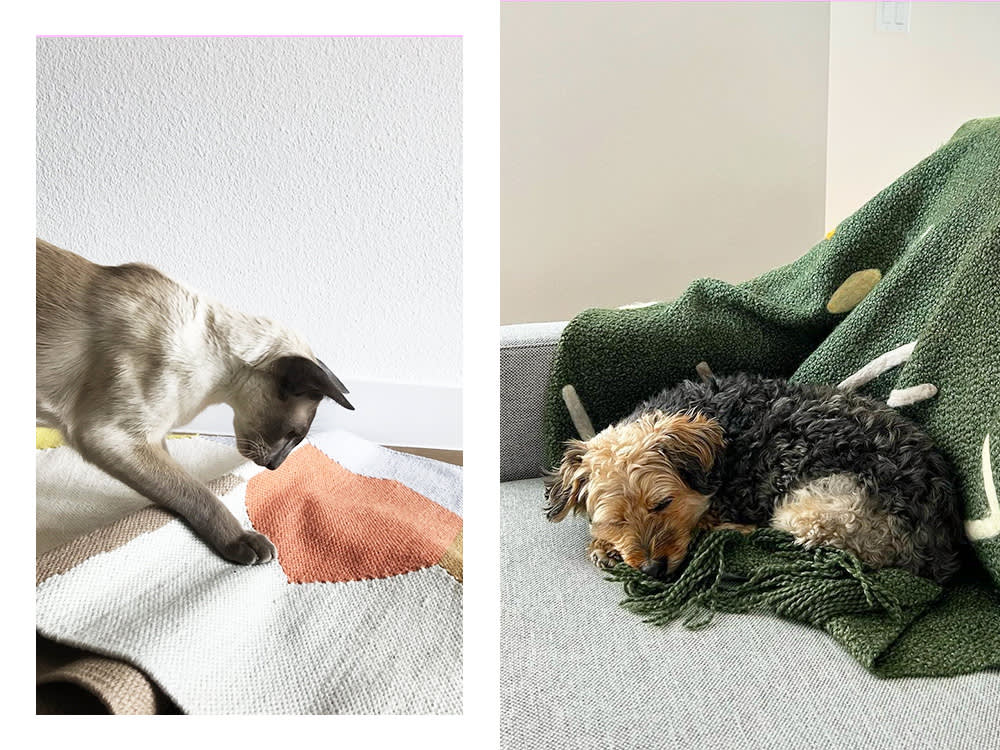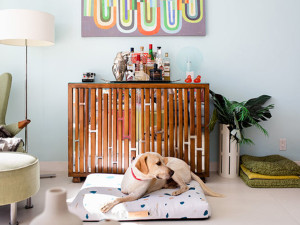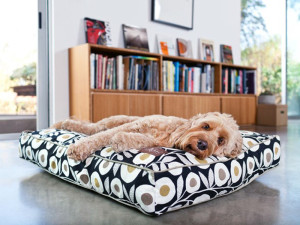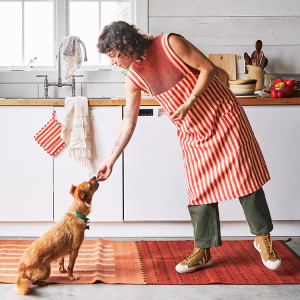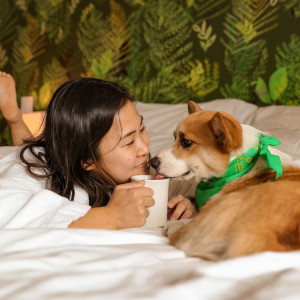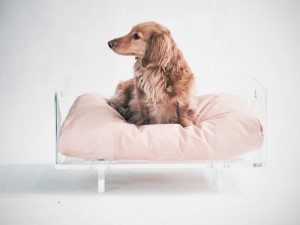MINNA’s Striped Beds Are the Prettiest Place for Pets to Snooze
Founder Sara Berks on the origins of her textile-forward brand’s ethical mission and artisan craftsmanship.

Share Article
When you buy a mattress, you scour over different brands, their reviews, and what makes one different from the next (truly, who cares by the time you’re done?). You cost-compare and consider payment plans or whether you want to shell out what could easily be several months of student loan opens in a new tab payments. As the Sleep Foundationopens in a new tab has reminded us in every mattress-sale commercial ever, we humans spend approximately 1/3 of our lives in bed. Well, your pet spends about half their day or more sleeping, so you also want to find the right place for them to curl up (and be thankful they aren’t taking up all the space on your brand-new overpriced mattress).
For cozy-cloud, aesthetically pleasing dog bed finds, you’ll want to start with MINNAopens in a new tab. The nine-year-old Hudson, New York-based brand is a queer-owned businessopens in a new tab comprised of a team of artists, creators, and thinkers. With ethics at the center of her mission, MINNA’s founder, Sara Berks, created a business that helps pet parents access sustainable products while uplifting the artisans who make them.

Get (totally free) deals for food, treats, accessories, tech, and way more pet parenting must-haves.
opens in a new tabThese days, MINNA produces everything from throw blankets for the living room to table runners for the kitchen, the heart of the brand lies in its line of (mostly striped) dog bedsopens in a new tab. Made with 100-percent washable cotton by pedal-loom weavers in San Antonio Palopó, Guatemala, MINNA’s collection of reversible dog beds exemplifies the brand’s commitment to sustainability and supporting local makers. Each bed’s design is thoughtfully named after a MINNA staff member’s pet, but Berks’s own pup, Soba, has the coveted title of Studio Dog.
MINNA’s mission of manifests in their simple and coveted homewares, including our pups’ resting places. Berks spoke with Kinship about cutting out the corporate middle man to ensure wage fairness, the hustle culture of NYC, and how being a dog person influences MINNA’s designs.
Your shop, MINNA, is now based in upstate New York, but you previously worked in Brooklyn. Is there something about the Hudson Valley that you find fosters creativity? How does it compare to being a creator in NYC?
I moved upstate almost seven years ago after a decade in Brooklyn. I started MINNA there, but it wasn’t until I got upstate that I could afford space and really propel MINNA forward. There’s an incredibly creative community here that certainly fosters more creativity, and there’s also an entrepreneurial spirit here. There’s less pressure of a hustle than in NYC that allows for space to create in a different way. At least for me, I can have a stressful day at work, but the drive home (or the walk into the backyard) brings me back to center.
What inspired you to make products for pets?
I’m a dog person, and I’ve always wanted to make something for furry friends. My main concern was making something that was durable while also being beautiful. We developed a strong fabric that can withstand washing and some scratching!
Do you currently have any pets? Have you always been a pet person?
Yes, I have a dog named Soba and a cat named Bear. Bear is actually bigger than Soba, which is an amusing balance. I grew up with a Beagle named Clarissa (yes, I named her after [the 1990s sitcom] Clarissa Explains It All), and I also adopted a dog in Brooklyn named Max.
How do you ethically source materials? Do you have craftspeople you regularly work with?
Our entire business model is built on long-term relationships. We work directly with our artisan partners to develop all of our products and regularly check in about what’s working and what can be improved. These types of relationships set you up to work more ethically and equitably. Some of the groups we met on my first product development trip in 2015.
You’ve shared that your work is inspired by Bauhaus and feminist works. Do you have a background in art history or activism that led you to incorporate these principles into your art?
My background is actually in graphic design and learning about the Bahaus [movement] was so important to my development as a designer and an artist. As a queer woman who spent my 20s in Brooklyn, I was surrounded by radical ideas about how to live and work in the world. When I started MINNA, it was important to me to stay true to those roots and ensure that my business did more than make money — but also had a positive impact, whether through creating job opportunities or redistributing funds.
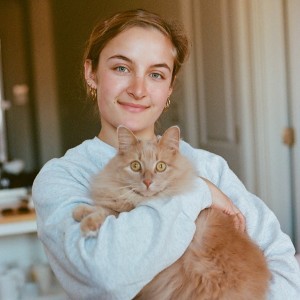
Avery Felman
Avery is a writer and producer. She has written for numerous publications, including Refinery29, BuzzFeed, and V Magazine. When she’s not at her computer, you can find her reading, practicing her Greek on Duolingo, and delving into the Sex and the City discourse. She lives in Brooklyn, New York with her husband and their cat, Chicken, who rules with an iron fist.
Related articles
![Tan dog laying on Lay Lo bed in a livingroom.]() opens in a new tab
opens in a new tabThe Inspiration Behind Lay Lo Dog Beds Is — No Surprise — a Very Special Senior Dog
Who doesn’t love a terrazzo print these days?
![Golden dog laying on patterned Jax & Bones bed in living room]() opens in a new tab
opens in a new tabSoda Bottles & Fabric Scraps Get A Playful Reimagination In Jax & Bones
Tina Nguyen couldn’t find stylish, sustainable, and locally produced products for her dog — so she made them herself.
![Femme-presenting pet parent feeding their dog a treat in the kitchen]() opens in a new tab
opens in a new tab9 Queer-Owned Pet Brands We’re Celebrating This (And Every Other) Month
Support these LGBTQ+ animal lovers by shopping their design-forward pet beds, carriers, supplements, and more.
![A woman laying on a bed with her dog with green palm wallpaper in the background.]() opens in a new tab
opens in a new tabSustainable Pet Parenting Can Be Stressful. Here’s How to Deal
A climate psychologist on how to deal with eco-anxiety: “We have to be good to ourselves the way we want to be good to the planet.”
![Tan small dog sitting on Clear Rectangular Lucite Dog Bed from hiddin with light pink seat cushion]() opens in a new tab
opens in a new tabIs This the Philippe Starck Ghost Chair of the Pet World?
Hiddin’s lucite pet products are lightweight, versatile and — more importantly — invisible.

